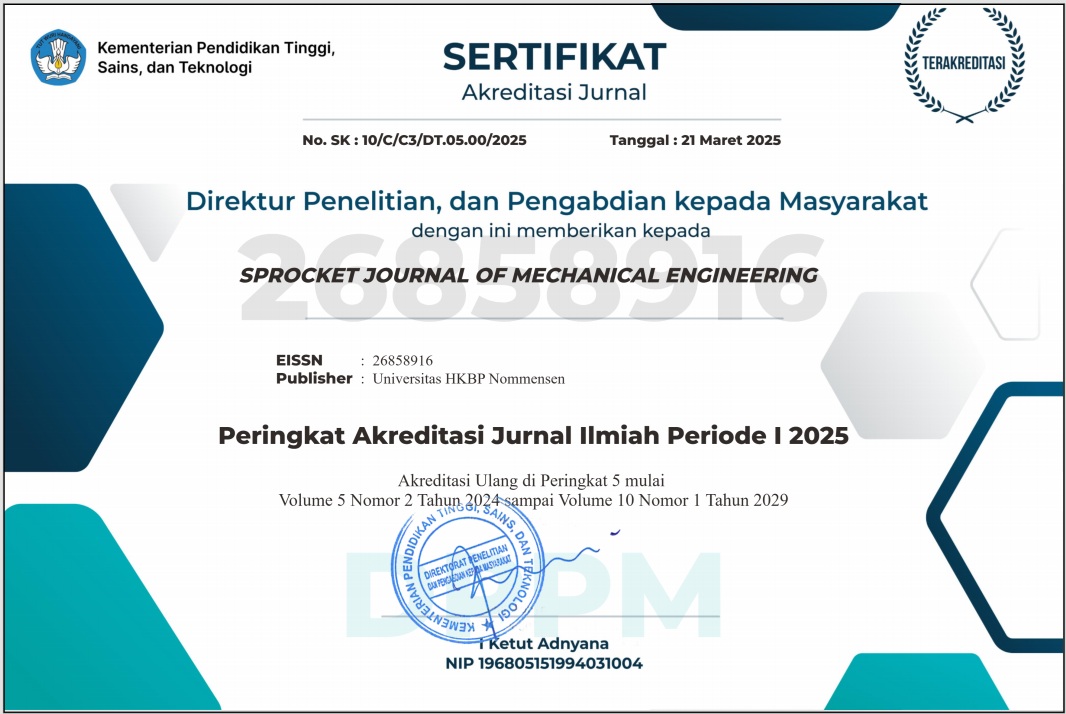Alasan Penggunaan Material Bekas Pada Bangunan
Abstract
This study aims to find out the reasons that encourage the reuse of used materials in buildings. The data collection method was carried out by means of a questionnaire survey and interviews with respondents involved in the use of used materials, especially used wood. Respondents consist of used material traders, used material users, building contractors, foremen and building construction contractors who are used material producers. The research was carried out at used building material sales centers in Medan City, which are usually located on Jalan Pahlawan, Medan Perjuangan District, Jalan BrigJen Katamso, Jalan Gagak Hitam, and Jalan Helvetia Raya. Overall there were 10 respondents who participated. This study concludes that the main reason for using used wood materials is related to the price difference between used materials and new materials. Even though the use of used goods has a positive impact on efforts to preserve the environment, environmental conservation considerations have not become an important consideration in the use of used materials in the city of Medan.
References
Bower,B.T. (1977) ‘Economic Dimensions of Waste Recycling and Re-use: Some Definitions, Facts, and Issues’, in D.W.Pearce and Walter, I. (eds) Resource Conservation: Social and Economic Dimensions of Recycling,Longman Group Ltd., London, pp.1-19
Guthrie,P. and Mallet,M. (1995) Waste Minimisation and Recycling in Construction – a review. CIRIA Special Publication 122. London: CIRIA
Hansen, T.C. (ed.) (1992) Recycling of Demolished Concrete and Masonry. Report of Technical Committee 37-DRC Demolition and Reuse of Concrete. RILEM Report. London: E&FN Spon.
Kibert,C.J. (ed) (1994) Sustainable Construction - Proceedings of the First International Conference of CIB TG 16, Gainesville: Center for Construction and Environment.
Lauritzen, E.K. (ed.) (1994) Demolition and Reuse of Concrete and Masonry. Proceedings of the Third International RILEM Symposium. Odense, Denmark 24-27 October 1993. London: E&FN Spon.
Lumbangaol, P (2013) ‘Pengelolaan Limbah Konstruksi Di Jakarta’, Jurnal Poliprofesi, vol.VII, no.2, hal.55-66
Lumbangaol, P (2015) ‘Analisa Jumlah Batu Bata Terbuang Pada Pembangunan Rumah’, Jurnal Poliprofesi, vol.4, no.1, hal.10-19
Maniatis, K., Vanhille,S., Martawijaya,A., Buekens,A., and Verstraete,W. (1987) ‘Solid Waste Management in Indonesia, Status and Potential’, Resource and Conservation, vol.15, pp.277-290
Medina,M. (1998) ‘Scavenger Cooperatives in Developing Countries’, BioCycle, vol.39, no.6, pp.70-72
Quimby,T.H.E. (1975) Recycling: The Alternative to Disposal. London: The John Hopkins University Press.
Reddrop,A., and Ryan, C. (1997) Housing construction waste : a research study by the National Key Centre for Design at RMIT. Commonwealth Department of Industry, Science and Tourism. Canbera : Australian Government Publishing Service
Sicular, D.T., (1992) Scavengers, recyclers, and solutions for solid waste management in Indonesia, Center for Southeast Asia Studies, University of California Berkeley.
Simpson,M. (1993) ‘Lapaks and Bandar Convert MSW in Indonesia’, BioCycle, vol.34, no.6, pp.78-80.
Skoyles,E.R., and Skoyles, J.R. (1987) Waste Prevention on Site, London: Mitchell
Soerjani M. (1984) ‘Recent Waste Management in Cities in Indonesia’, Conservation & Recycling, vol.7, nos.2-4, pp.181-190
Stake,R.E. (1995) The art of case study research, Thousand Oaks : Sage Publications
Tchobanoglous,G., Theisen,H. and Vigil,S.A. (1993) Integrated Solid Waste Management: Engineering Principles and Management Issues, New York : McGraw-Hill, Inc.
Undang-Undang Republik Indonesia no.18 tahun 2008 tentang Pengelolaan Sampah
Wilson,E.J, McDougall,F.R., and Willmore,J. (2001) ‘Euro-trash: searching Europe for a more sustainable approach to waste management’ Resources Conservation & Recycling, vol.31, pp.327-346
Wulandari,R. (2001) ‘Minimisasi Limbah Konstruksi pada Proyek rumah Tinggal’, unpublished final project report, Civil Engineering Department, Faculty of engineering, University of Indonesia

This work is licensed under a Creative Commons Attribution 4.0 International License.
Penulis yang menerbitkan dengan SPROCKET JOURNAL OF MECHANICAL ENGINEERING menyetujui ketentuan berikut :
- Penulis memegang hak cipta dan memberikan jurnal hak penerbitan pertama dengan karya yang dilisensikan secara bersamaan di bawah Lisensi Internasional Creative Commons Atribusi 4.0 . yang memungkinkan orang lain untuk berbagi karya tersebut dengan pengakuan atas kepengarangan karya dan penerbitan awal dalam jurnal ini.
- Penulis dapat membuat pengaturan kontraktual tambahan yang terpisah untuk distribusi non-eksklusif atas versi jurnal yang diterbitkan dari suatu karya (misalnya, mempostingnya ke repositori institusional atau menerbitkannya dalam sebuah buku), dengan pengakuan atas penerbitan awalnya di jurnal ini.
- Penulis diizinkan dan didorong untuk mengunggah karya mereka secara daring (misalnya, di repositori institusi atau di situs web mereka) sebelum dan selama proses penyerahan, karena hal ini dapat mengarah pada pertukaran yang produktif, serta kutipan yang lebih awal dan lebih banyak dari karya yang diterbitkan (Lihat Pengaruh Akses Terbuka ).






.png)
.png)

